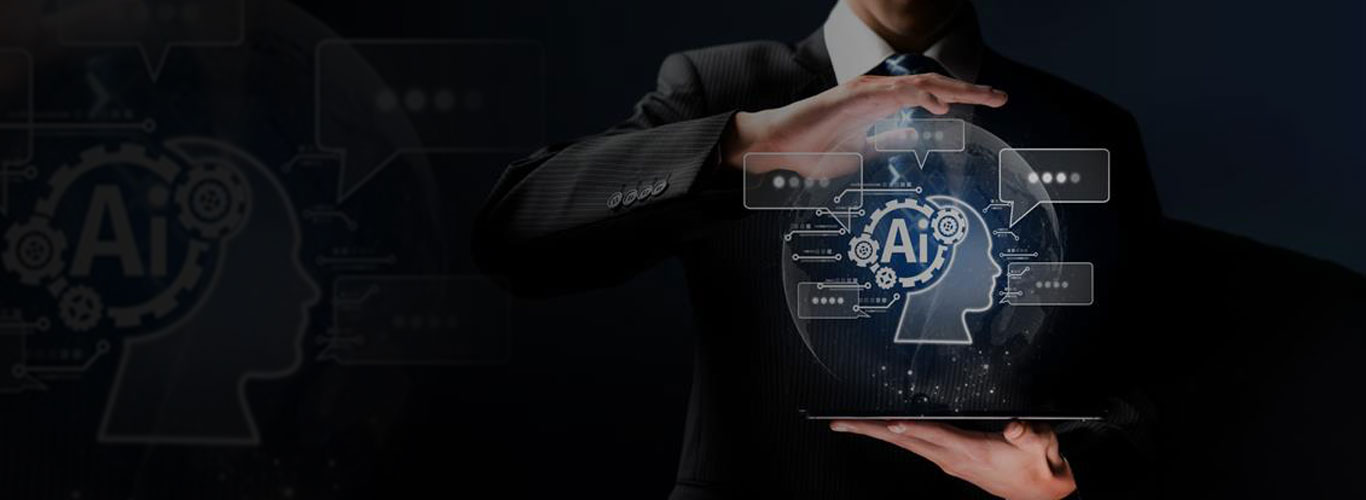Cognitive AI Era: The Coming Age of Cognitive Enterprises
“AI is the new electricity,”
This was an observation from famous Computer Scientist Andrew Ng years ago. He was right, but with a caveat.
Electricity transformed industries not because factories bought generators, but because they rewired everything: workflows, training, safety, and economics. The cognitive enterprise requires the same rewiring. It’s not bolting an LLM onto a help center; it’s embedding intelligence into the operating system of the business.
I spend my regular days in two very different rooms: glass-walled boardrooms where strategy gets debated, and buzzing operations floors where work actually happens.
In both places, we hear the same thing in different words: we’ve reached the ceiling of “digital transformation” as we knew it. The next step isn’t just faster software; it’s a company that can sense, reason, and act. That is the cognitive enterprise, and it’s arriving faster than most leaders realize.
What a Cognitive Enterprise Actually Is
When I say “cognitive,” I mean a closed loop that learns from operations and outcomes, interprets context, and takes action with accountability. Data flows continuously from apps, machines, documents, and customers into a unified fabric.
Models, some generative, some predictive, some purely rules-based, reason over that context. Actions are executed through workflows, APIs, and sometimes robots, with a clear record of what happened, why it happened, and whether it worked. Then the loop tightens, because the system learns.
At Nuvento, we call this the enterprise intelligence layer. In practice, it looks like a lakehouse foundation that handles real-time streams and unstructured knowledge.
To deduce,
- A portfolio of models tuned to the domain and grounded in retrieval, so outputs are tied to actual enterprise truth.
- An orchestration layer that can write back to ERP, CRM, supply chain, and financial systems.
- A trust layer that enforces policy, privacy, and evaluation by design.
It sounds complex because it is, but the payoff is measured not in proofs-of-concept, but in decisions made better and faster across the business.
Why now?
Three forces are converging to make the cognitive enterprise practical.
- The Generative AI reset expectations for human-computer interaction. Natural language is now an interface to expertise. GitHub’s studies showed developers completing tasks up to 55% faster with Copilot. We see the same pattern with legal drafting, finance close narratives, supply planning, and customer service, work accelerates, and quality improves when knowledge is made accessible on demand.
- Hybrid cloud and GPU economics, accelerated by the big platform upgrades we’ve seen over the last year, mean you can train and serve models with predictable cost and latency.
- Governance is catching up. The NIST AI Risk Management Framework provides a common language for risk categorization and controls. The EU AI Act’s phased obligations have made risk-tiering, transparency, and monitoring a board-level conversation. Responsible AI has moved from slideware to engineering.
What it looks like in the wild
You don’t need to squint to see cognitive loops in production.
There are several examples around us. Morgan Stanley’s wealth-management assistant puts the firm’s knowledge at an advisor’s fingertips in real time, grounded by retrieval to ensure responses reflect current policy and research.
Amazon introduced Rufus to guide shopping with context and conversation, a glimpse of personalization moving from “people like you” to “you, right now.”
In industry, Siemens and partners have shown how digital twins and industrial copilots reduce downtime and energy use by letting teams simulate and reason before they act. And across the office, Copilot and Gemini are quietly rewiring how documents are created, code is reviewed, and strategic insights are generated.
These are not demos; they’re early chapters of operating models where software agents and people share the work.
From digital transformation to cognitive transformation
Digital transformation digitizes processes, whereas the cognitive transformation reimagines decisions. That difference matters in our organizations.
Let us look into some examples.
- A digitized claims system is faster than paperwork. But a cognitive claims system classifies the case, extracts evidence, detects anomalies, recommends settlement ranges, and learns from outcomes to improve every week.
- A digitized supply chain gives you dashboards. Whereas a cognitive supply chain resolves exceptions autonomously, escalates only when human judgment is truly needed, and explains what it did.
This shift forces new muscles. Cross-functional “AI product” teams become the unit of value creation, domain experts, data stewards, model engineers, designers, and operators building together.
Culture shifts from pilots to platforms. As Peter Drucker reminded us, “Culture eats strategy for breakfast.” Incentives must reward safe experimentation and measured business impact, not vanity metrics.
Responsible By Design
Trust is table stakes. At Nuvento, we treat governance with the same importance as code. Privacy is embedded, data minimization, consent awareness, and retention are enforced at the platform level.
“If your AI can’t explain itself to the people it serves, your brand will have to,” We tell our team often. Explanations don’t have to be academic; they have to be appropriate. Why this recommendation? What data informed it? How confident is the system, and how do I override it? Cognitive enterprises make those answers part of the experience.
The Pragmatic Path to Value
Leaders often ask me, “Where do we start with cognitive transformation?” My answer is start where you have to make frequent decisions, and you have enough data.
Pick a handful, not a dozen. Put an executive owner on each. Define success as a business outcome, cycle time reduced, cost-to-serve lowered, not just as your model accuracy.
Connect the sources that matter, including the unglamorous repositories of policy PDFs, SOPs, etc.
Let real users shape the agent’s behavior. When a use case proves its ROI, integrate it deeper, harden the controls, and scale it.
The Edge of What’s Next
I’m convinced we’re moving toward back offices and supply chains that self-heal. Software agents will resolve most exceptions, ask for help only on the thin slice of judgment calls, and learn from each resolution.
Multimodal reasoning, text with code, images, telemetry, and time series, will let enterprises diagnose a failing turbine or a slipping P&L with the same cognitive fabric. Industry copilots will go deep, outperforming generalists in safety- and regulation-heavy domains because they’re grounded in governed knowledge.
The regulatory environment will get clearer, not looser. That’s a good thing. The EU AI Act and NIST AI RMF are pushing us toward repeatable, auditable practices. The companies that embrace this early will scale faster because they can prove reliability.
How We Frame Value at Nuvento
When we sit with a client’s leadership team, we align on a simple ladder of value.
First comes Jumpstart: time saved, errors reduced, cycle times shortened across support, code, content, and finance.
Next is Accelerate: better decisions about pricing, inventory, underwriting, and risk, more revenue or margin per interaction.
The top rung is Transform: 24/7 expert service with your company’s brain, real-time digital twins of core processes, autonomous testing and remediation, and hyper-personalized experiences that respect privacy.
We don’t scale a use case until the numbers prove out against that ladder. It keeps the work honest and the momentum real.
The Cognitive Enterprise isn’t Optional
Your competitors are already teaching their organizations to think in software. The winners won’t just add AI to existing processes; they’ll redesign work around augmented intelligence and accountable autonomy. That sounds ambitious because it is. But we’ve never had better tools, clearer guardrails, or more compelling evidence that the shift pays off.
“Every company is a data company” used to be the mantra. Today, every company must become a cognitive company.
If you’re ready to move from pilots to platform outcomes, our team at Nuvento is ready to help you build the intelligence layer, the guardrails, and the operating model to thrive in the coming age of cognitive enterprises.




